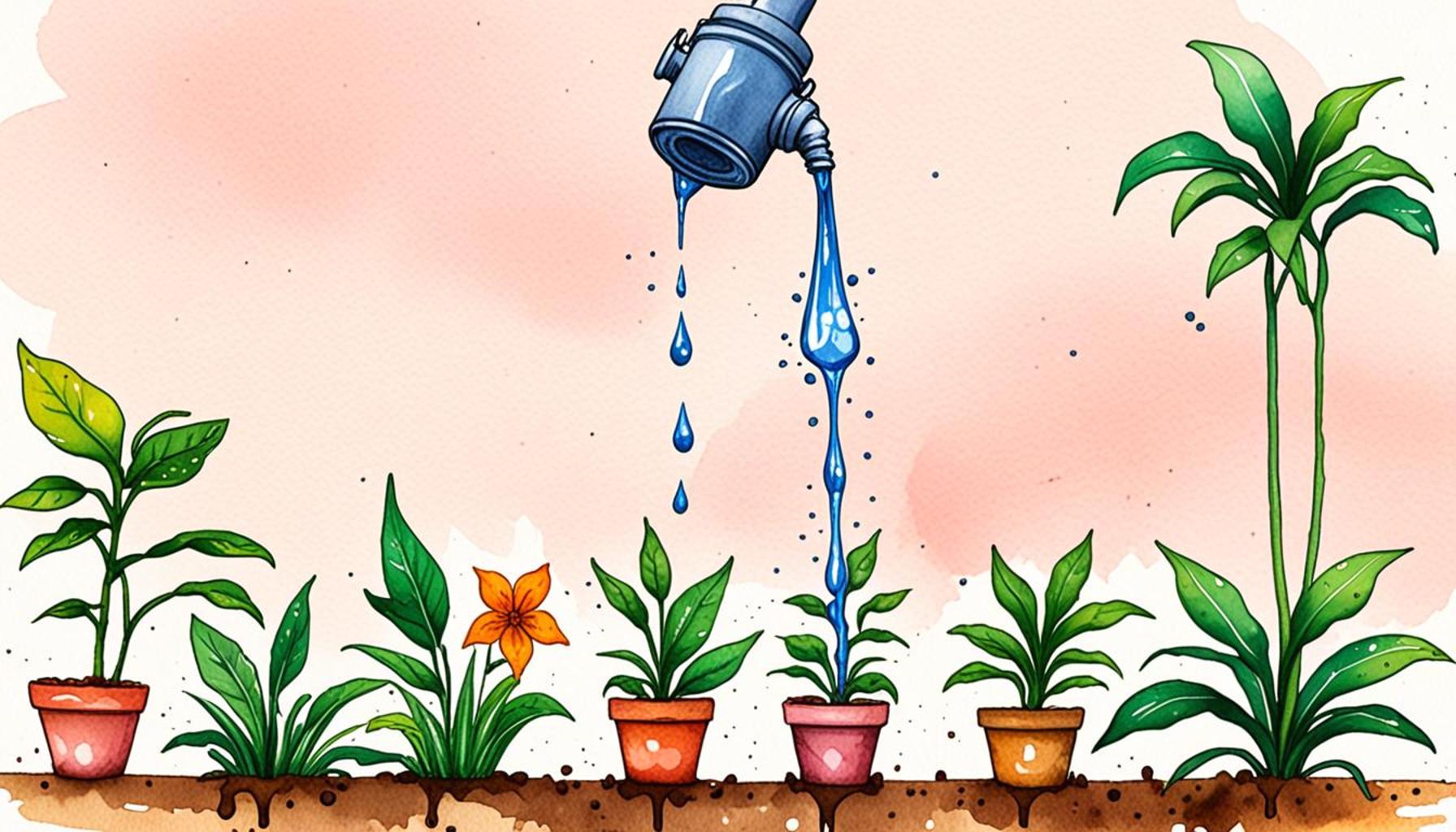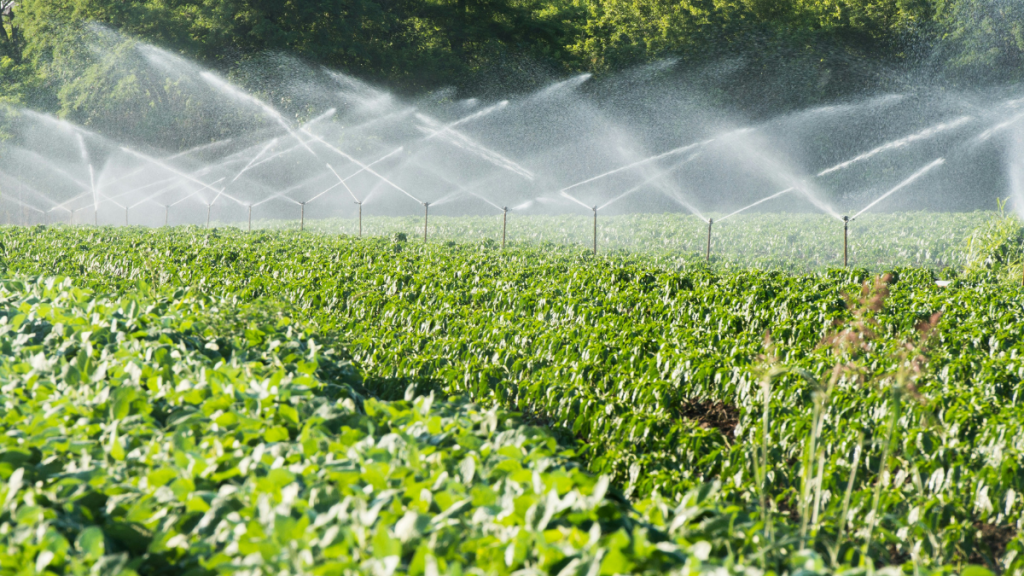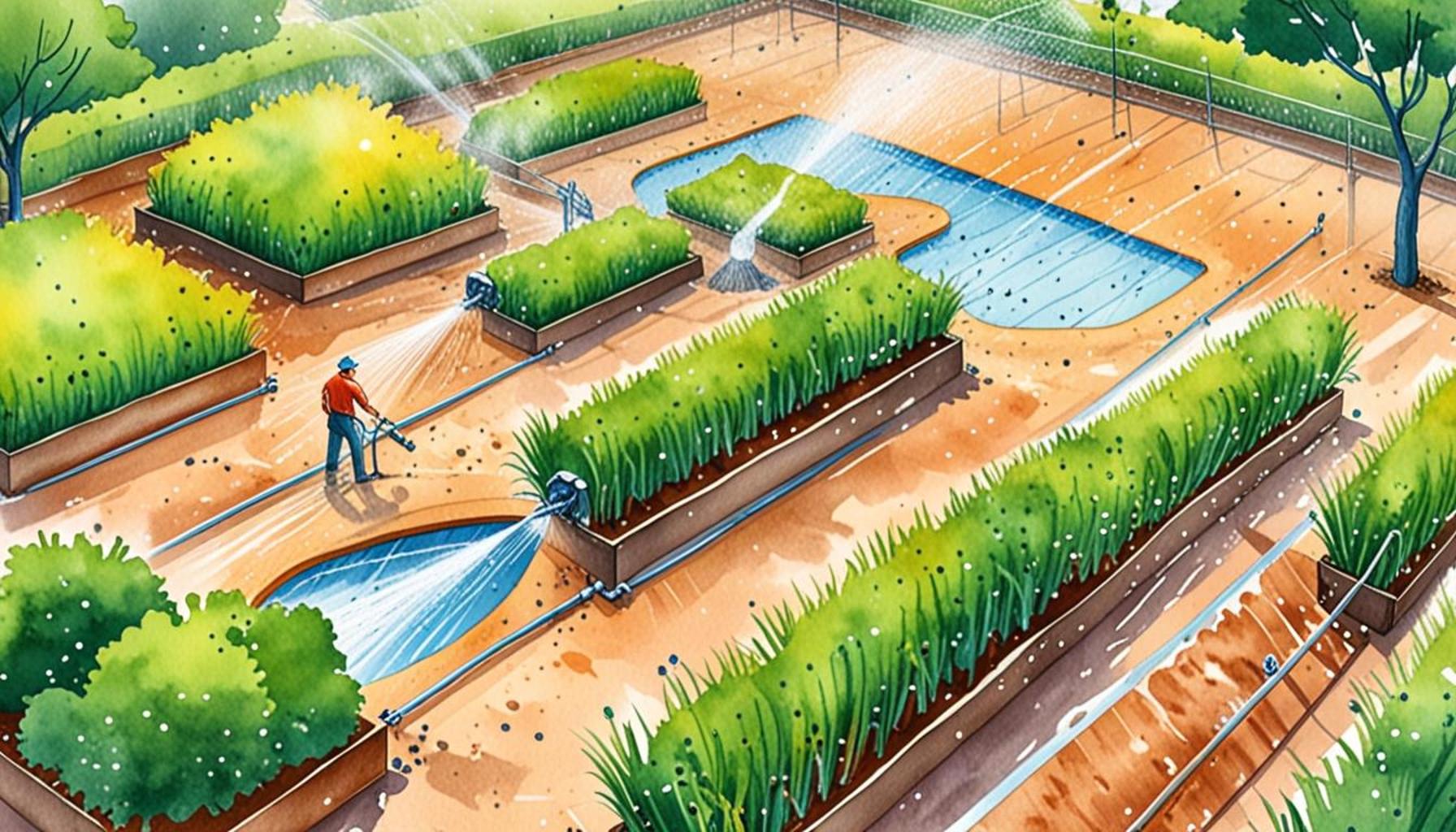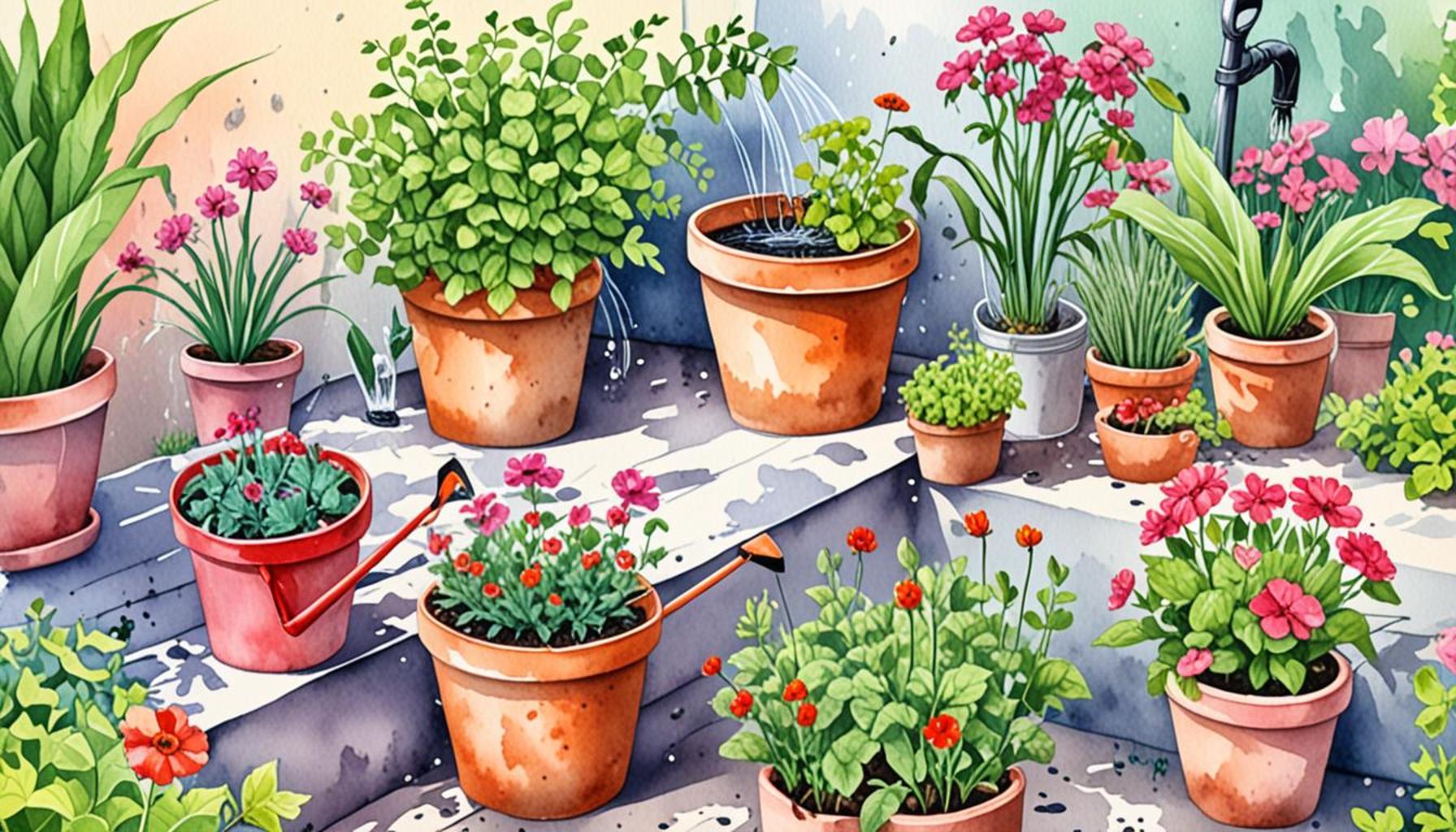Drip Irrigation Techniques: Saving Water and Promoting Healthy Growth

Understanding Drip Irrigation
As water scarcity becomes a pressing issue across the globe, especially in regions heavily reliant on agriculture, innovative solutions like drip irrigation techniques emerge as game-changers. Drip irrigation is a method that involves delivering water precisely where it is needed—at the roots of plants—through a network of tubing, pipes, and emitters. This targeted watering not only conserves water but also significantly enhances plant growth and overall farm productivity.
Benefits of Drip Irrigation
Drip irrigation offers a range of benefits that make it an attractive option for farmers and gardeners:
- Conservation of Water: One of the most significant advantages of drip irrigation is its ability to reduce water usage by as much as 50% compared to traditional irrigation methods. By minimizing evaporation and runoff, this technique ensures that every drop counts, especially in arid regions.
- Improved Plant Health: Drip systems deliver not just water, but also nutrients directly to the plants’ root zones. This targeted approach allows for better nutrient uptake and can lead to stronger, healthier plants. Farmers in states like California’s Central Valley, known for their agricultural output, have seen remarkable improvements in yield and quality using this system.
- Reduced Weed Growth: Since water is delivered directly to the root zone, it prevents moisture from reaching the surrounding soil, thereby inhibiting weed growth. This can save time and resources by reducing the need for weeding and herbicides.
Impact on Global Agriculture
With agriculture consuming over 80% of the world’s freshwater resources, transitioning to efficient irrigation systems is vital for sustainable farming practices. Countries like Israel have pioneered drip irrigation technology, showcasing its potential. The efficiency gained from such systems can lead to more sustainable food production globally and reduce pressure on dwindling water supplies.
In the United States, farmers from diverse regions, from the arid plains of Texas to the humid fields of Florida, are increasingly adopting drip irrigation techniques. The deployment of these systems allows crops to thrive even in less-than-ideal weather conditions, creating a more resilient agricultural framework for the future.

Implementing Drip Irrigation
For those interested in adopting drip irrigation, the process begins with a thorough understanding of your specific garden or farm. Assess your water source, the type of crops you are growing, and the layout of your land. Various products are available—from simple drip hoses to sophisticated digitally controlled systems—allowing for scalable options regardless of the size of your operation.
Farmers and gardeners alike can consider drip irrigation not just as a method of watering, but as a way to make a significant impact on water conservation and efficiency. As we face the challenges posed by climate change and population growth, embracing such innovative approaches will be crucial in sustaining agricultural practices for generations to come.
DIVE DEEPER: Click here to learn more about enhancing soil health
Advantages of Drip Irrigation Systems
In the pursuit of sustainable agriculture and efficient water use, drip irrigation techniques stand out as one of the most effective methods available today. While farmers and gardeners alike have long prioritized the health of their crops, the introduction of automated drip systems has revolutionized the way irrigation is approached. Understanding the myriad advantages of these systems can help illustrate why they are becoming increasingly popular.
Water Efficiency
Water scarcity is no longer just a concern for drought-stricken areas; it is a global issue with significant implications for food security. On average, drip irrigation can save up to 50% more water compared to traditional irrigation methods like flood or furrow irrigation. By delivering water directly to the root zone of plants, this system drastically reduces the amount of water lost to evaporation and runoff. Farmers can now manage their water supply more effectively, making it possible to cultivate crops in regions that were previously deemed unfit for agriculture.
Economic Benefits
While the initial investment in drip irrigation techniques may seem daunting, the long-term economic benefits often outweigh the costs. Here are several key financial advantages:
- Lower Water Bills: By significantly reducing water consumption, farmers can expect a decrease in monthly water expenses.
- Increased Crop Yields: With enhanced plant health from targeted watering, farmers can enjoy higher yields, which directly translates to increased revenue.
- Reduced Labor Costs: Drip irrigation minimizes the need for manual watering and weeding, allowing farmers to redirect their labor towards more value-added activities.
Uniformity in Water Distribution
Another compelling advantage of drip irrigation is its ability to provide a consistent and uniform distribution of water across the crop area. Unlike traditional methods where water may pool in some areas and remain dry in others, drip systems ensure that every plant receives an optimal amount of moisture. This uniformity not only promotes healthy growth but also helps in preventing stress on crops during critical growth phases.
Environmentally Friendly Practices
The shift towards drip irrigation techniques aligns well with efforts to minimize environmental impact. By utilizing less water and reducing runoff, farmers help protect local ecosystems and groundwater supplies. Additionally, the lower frequency of herbicide and pesticide application due to reduced weed growth fosters a healthier environment for beneficial organisms, such as bees and earthworms, which play vital roles in the agricultural ecosystem.
As the demand for water-efficient farming practices grows, it is clear that adopting drip irrigation can lead to profound changes in agricultural productivity, economic stability, and environmental health. Not only does this technique offer a proactive solution to water conservation, but it also plays a pivotal role in promoting a sustainable agricultural landscape for the future.
Drip Irrigation Techniques: Saving Water and Promoting Healthy Growth
Drip irrigation is rapidly gaining popularity among gardeners and agriculturalists as an efficient method for delivering water directly to the roots of plants. This targeted approach not only conserves water but also enhances plant health and growth, making it an indispensable strategy in sustainable farming. By using a network of tubing and emitters, drip irrigation allows for precise and controlled water application, which significantly reduces wastage compared to traditional watering methods.
One of the standout features of drip irrigation is its ability to conserve water. Studies show that this technique can reduce water consumption by up to 50% compared to surface irrigation. This reduction is critical in regions facing water scarcity or where efficient water use is essential. Furthermore, because water is delivered directly to the plants’ root zones, there is less evaporation and runoff, ensuring that more of the applied water is available for plant uptake.
Moreover, drip irrigation supports healthy plant growth by preventing overwatering and promoting even moisture distribution. This consistent moisture level minimizes the risk of root rot and diseases caused by excess water, which are common when using sprinkler systems. Additionally, by maintaining optimal moisture conditions, plants are less stressed, resulting in enhanced nutrient uptake and improved yields.
Furthermore, the addition of fertilizer injection technology—often referred to as fertigation—within drip systems allows for simultaneous nutrient application, directly to the roots. This method ensures that plants receive the essential nutrients they need for growth, further promoting their health and productivity. As we dive deeper into the innovative world of drip irrigation, it becomes evident that adopting these techniques can lead not only to substantial water savings but also to stronger, healthier crops that can withstand environmental challenges.
| Advantages | Key Features |
|---|---|
| Water Conservation | Reduced water usage by up to 50% compared to traditional methods. |
| Enhanced Plant Health | Direct water delivery prevents overwatering and promotes even moisture distribution. |
This comprehensive insight into drip irrigation techniques highlights how these methods are revolutionizing agricultural practices, ensuring a sustainable future for farming while supporting environmental conservation. Whether you are a small-scale gardener or managing larger agricultural operations, exploring these water-efficient solutions can foster not only economic benefits but also ecological sustainability.
DIVE DEEPER: Click here to learn about soil types
Implementing Drip Irrigation: Techniques and Considerations
As the agricultural landscape evolves, understanding how to effectively implement drip irrigation techniques is critical for farmers and gardeners looking to optimize their resource management. The transition from traditional irrigation methods to drip systems involves careful planning and consideration of various factors to ensure successful application.
Types of Drip Irrigation Systems
There are several types of drip irrigation systems available, each designed to cater to specific crops and environmental conditions:
- Self-Contained Drip Systems: These are typically used in home gardens and small farms, consisting of a reservoir that supplies water via gravity-fed tubing. Ideal for areas with limited water pressure.
- Pressure-Compensating Drippers: These are crucial for uneven terrain, as they regulate water flow to ensure that each plant receives a consistent amount regardless of elevation changes.
- Subsurface Drip Irrigation: A technique becoming increasingly popular, this involves burying drip lines underground. It minimizes evaporation and delivers water directly to root zones, which is especially beneficial in arid climates.
Design and Layout Considerations
Effective drip irrigation systems require meticulous design and layout planning. Factors to consider include:
- Soil Type: Different soil types have varying water retention capabilities. Understanding your soil is essential to determine the spacing of emitters and appropriate watering schedules.
- Crop Type: Different plants have specific water requirements, and the configuration of the drip system should cater to these specific needs for optimal growth and yield.
- Water Source: Reliability and quality of your water source should inform decisions on filtration systems and pressure regulations to avoid clogging and ensure efficient operation.
Implementing a well-thought-out drip irrigation system can enhance crop management through precision watering, leading to healthier plants and reduced resource waste.
Maintenance and Monitoring
To maintain the effectiveness of drip irrigation techniques, regular monitoring and maintenance are essential. This involves:
- Cleaning Filters and Emitters: Debris and mineral buildup can lead to blockages. Regularly cleaning filter systems and emitters ensures consistent water flow throughout the growing season.
- Inspecting for Leaks: Frequent checks for leaks or damaged lines can prevent significant water loss and reduce costs associated with unnecessary repairs.
- Monitoring Soil Moisture Levels: Utilizing soil moisture sensors can provide data on irrigation efficiency, allowing for timely adjustments to watering schedules based on real-time needs.
Educational Resources and Support
Farmers interested in drip irrigation techniques can access a wealth of educational resources to enhance their knowledge and implementation skills. Agricultural extension services, workshops, and online tutorials provide insights into the best practices related to design, installation, and maintenance. Additionally, many states offer financial assistance programs to support the transition to water-efficient irrigation systems, which can defray initial costs. Engaging with local agricultural communities can also foster collaboration and knowledge-sharing, further enhancing the effectiveness of drip irrigation systems.
With a growing commitment to sustainability and resource conservation, investing time in understanding drip irrigation techniques will prove beneficial for both immediate crop success and the long-term viability of farming operations.
DISCOVER MORE: Click here to learn about the importance of organic matter in soil health
Conclusion: Embracing the Future of Irrigation
In the face of increasing water scarcity and the pressing need for sustainable agricultural practices, drip irrigation techniques stand out as a transformative solution. These innovative systems not only facilitate efficient water usage but also promote healthier plant growth by delivering moisture directly to the roots where it is most needed. By adopting various types of drip irrigation systems, such as self-contained units, pressure-compensating drippers, and subsurface installations, farmers and gardeners can tailor their approach to meet specific crop requirements and environmental conditions.
Moreover, careful design and ongoing maintenance are essential elements that enhance the effectiveness of these systems. Regular inspection and upkeep not only prevent costly repairs but also maximize water efficiency. The utilization of advanced technologies, such as soil moisture sensors, further refines irrigation practices, making them more precise and resource-conscious.
The journey toward sustainable agriculture does not have to be taken alone. With a wealth of educational resources and community support readily available, individuals interested in drip irrigation techniques can gain valuable insights and practical skills. This collaborative spirit fosters innovation and shared expertise, ultimately leading to more robust and resilient farming practices. As we move forward, embracing these methods can result in significant long-term benefits—not only for crop yield but also for the conservation of one of our most precious resources: water.
In conclusion, the application of drip irrigation is not merely an option but a necessity for thriving agricultural practices that align with the goals of sustainability and efficient resource management. Investing in these techniques today promises a healthier, greener tomorrow for our communities and ecosystems alike.


